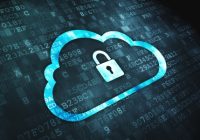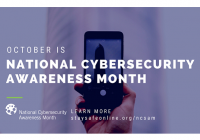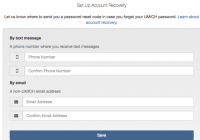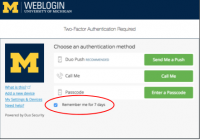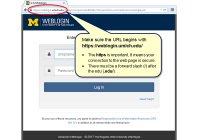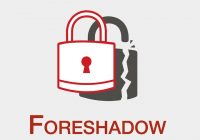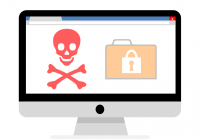Category Archives: Safe Computing
ITS begins work on CUI proof of concept
The University of Michigan has been working on a effort to ensure that the university is compliant with the new regulations concerning the use of Controlled Unclassified Information (CUI). The next step is to develop a CUI public cloud strategy and proof of concept in AWS. That is where the ITS Cloud Infrastructure Transformation Program (CITP) technical team… Read More »
U-M Information Security policy: Revised and approved
The revised University of Michigan Information Security policy (SPG 601.27) recently was approved, along with a number of new information technology standards. The policy and accompanying standards represent the most comprehensive revision of the institution’s information security program since its inception over a decade ago. SPG 601.27 and the standards are based on a cybersecurity risk management framework that… Read More »
Shop online safely with these tips
The holiday season is just around the corner, and you may be getting ready to do some online shopping. The Safe Computing website offers tips to protect your personal information and devices when you shop online. Secure your environment. Keep devices and accounts secure and choose the safest ways to pay. Know who you are dealing with. What… Read More »
Duo expansion: New app and resources support two-factor for Weblogin
Getting questions about U-M’s move to two-factor for Weblogin for faculty and staff? New and updated materials are available that you can refer people to. The online and print materials are intended to help you prepare for January 23, 2019, when two-factor for Weblogin will be turned on for all faculty, staff, student employees, and sponsored affiliates of… Read More »
Keep your personal software up-to-date
We all should be in the habit of keeping our software up-to-date. This is necessary because vendors and others regularly identify security vulnerabilities in software and apps, and then release updates and patches to fix them. Additionally, keeping your software current enables you to take advantage of other improvements, such as better performance or new functionality. Personal computers… Read More »
Turn on two-factor for your personal accounts
Many popular services and websites offer two-factor authentication. Information Assurance (IA) encourages you to turn it on whenever it’s available to protect your personal accounts. Duo may be an option If you already use the Duo Mobile app for two-factor at U-M, you might be able to use it with your personal, non-university accounts. If a service’s instructions… Read More »
Michigan Medicine announces launch of Michigan Healthcare Security Operations Center
With the launch of the Michigan Healthcare Security Operations Center, Michigan Medicine is among the first in the nation working with four other healthcare organizations to continuously monitor and improve cybersecurity. The MI-HSOC is a group of highly-skilled teams that leverage shared technologies, process, and skills to prevent, detect, analyze, and respond to cybersecurity events. The new shared environment,… Read More »
Participate in National Cybersecurity Awareness Month this October!
Every October, Information Assurance (IA) leads a celebration of National Cybersecurity Awareness Month (NCSAM) by hosting events, sharing tips, and reminding everyone of our shared responsibility to protect and secure university and personal systems and the sensitive information they contain. NCSAM is spearheaded by the National Cyber Security Alliance and the U.S. Department of Homeland Security. This year,… Read More »
Use antivirus software to protect U-M and personal computers
Antivirus software should be installed and kept up-to-date on all of your computers—both your own and those owned by the university. MiWorkspace computers already have antivirus software installed, and it is updated automatically. For U-M computers Information Assurance (IA) recommends these antivirus products that are licensed for use on UM-owned computers: Windows 8 and 10. Use Windows Defender,… Read More »
New prompt starting to collect UMICH account recovery info
If you ever forget your UMICH (Level-1) password, you can efficiently recover your account access as long as you have already completed some simple, advance setup. ITS has long offered a self-service account recovery option, but many users were unaware of the advance setup requirement until it was too late. To address this gap, ITS is adding a… Read More »
Use Duo when traveling
Don’t let travel plans interrupt the protections provided by Duo. Duo offers multiple options to help you complete two-factor authentication when traveling. You may be able to use your regular Duo two-factor option, or you may need to use an alternative, depending on your travel plans. The recommended travel option is the Duo Mobile app on a smartphone… Read More »
Register today to attend SUMIT October 25
Mark your calendars for SUMIT_2018, U-M’s 14th annual cyber security conference on Thursday, October 25. Learn more and register today! Security at University of Michigan IT (SUMIT) is the university’s flagship event for National Cybersecurity Awareness Month. Held at Rackham Auditorium, SUMIT is an exciting opportunity to hear recognized experts discuss the latest issues, trends, and threats in… Read More »
Europe’s new privacy law causes influx of cookie notices
In the past months you may have noticed pop-up messages from websites informing you of an update in their privacy policy or asking if you understand that the company is using cookies to collect data about you. The increased disclosure is likely the result of a new law in Europe in effect since May 25: the General Data Protection… Read More »
Spying on remote screens—through the webcam mic
Ever wonder what the people on the other end of a Hangouts session are really looking at on their screens? With a little help from machine learning, you might be able to take a peek over their shoulders. Based on research published by Daniel Genkin, assistant professor of electrical engineering and computer science at the College of Engineering,… Read More »
U-M GDPR journey discussed at forum
If you’re worried about the impact of the General Data Protection Regulation (GDPR) in your unit, take a deep breath and relax. The university has got your back. Sol Bermann, university privacy officer and interim chief information security officer, and David Grimm, associate general counsel, reassured attendees at a July 26 GDPR open forum that—with the help of… Read More »
Duo can remember you for seven days
Now you can get the security benefits of two-factor for Weblogin with fewer login prompts. The Duo Remember Me time was extended from 12 hours to seven days on August 25. Remember to select the checkbox if you want Duo to remember you. You’ll see the Remember Me checkbox when you log in to a U-M site or… Read More »
Look before you log in
Phishing emails often include links to fake Weblogin pages that look exactly like the real one. If you log in to the fake page, your password is stolen, and your U-M account could be compromised. The only clue it’s a fraudulent login page is the URL. Before entering your UMICH (Level 1) password, check that the page’s web… Read More »
Intel processor vulnerability could put millions of PCs at risk
Researchers at U-M were part of a group that discovered a new processor vulnerability that could potentially put secure information at risk in any Intel-based PC manufactured since 2008. It could affect users who rely on a digital lockbox feature known as Intel Software Guard Extensions, or SGX, as well as those who utilize common cloud-based services,… Read More »
Beware of ransomware. And don’t pay the ransom!
Ransomware is malicious software that can infect and encrypt files on your computers and other devices, preventing you from accessing them. Criminals use it to threaten victims with loss of their data unless they pay ransom in return for a “key” to unlock their folders, files, and devices. Ransomware typically gets on devices when people open infected email… Read More »


